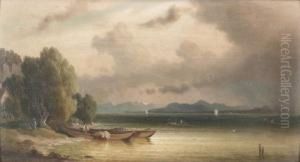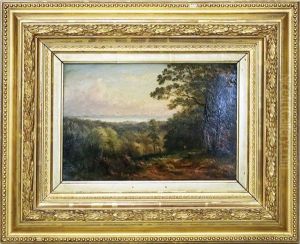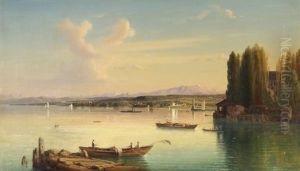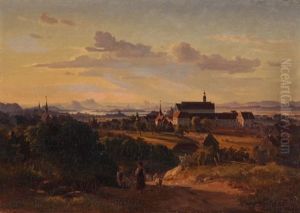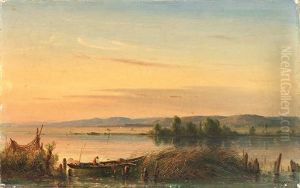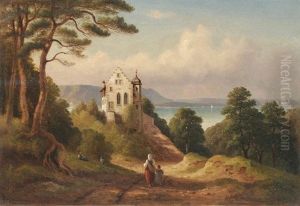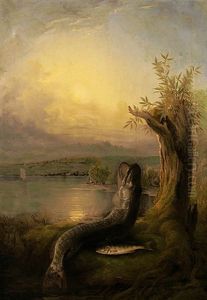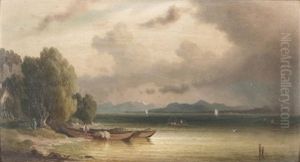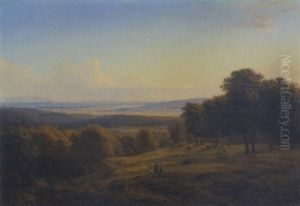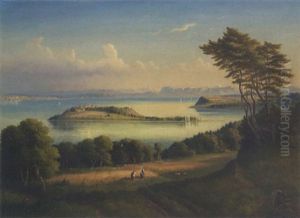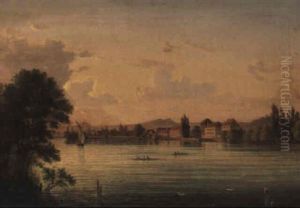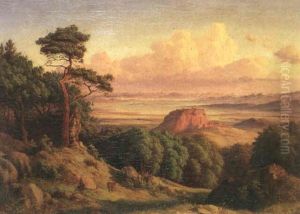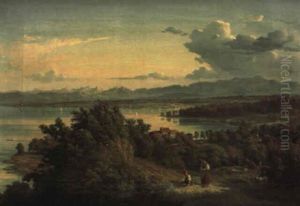Josef Moosbrugger Paintings
Josef Moosbrugger was an Austrian painter and stucco artist, born in 1744 in the Vorarlberg region of Austria. He was part of the Moosbrugger family, which included several notable artists of the Baroque period. Although not as widely known as some of his contemporaries, Josef contributed to the artistic landscape of the 18th century through his work in frescoes and stucco decoration, primarily in religious settings.
His artistic career was largely influenced by the traditions of the Baroque and Rococo styles, which were characterized by grandeur, rich ornamentation, and dramatic effects. Moosbrugger's work can be seen in various churches where his frescoes and stucco designs complement the architecture and enhance the spiritual atmosphere. His contributions to church interiors included altarpieces, ceiling frescoes, and elaborate stucco moldings that often depicted religious scenes and figures.
Despite the lack of extensive records about his personal life and the full scope of his oeuvre, Moosbrugger's surviving works suggest that he was skilled in creating compositions that harmonized with the architecture of the spaces he decorated. His ability to integrate visual elements into the structural design was a hallmark of the Baroque movement, and his work remains a testament to the era's aesthetic values.
Josef Moosbrugger passed away in 1830, leaving behind a legacy of religious art that continued to influence the visual language of churches in the region. While his name may not be as recognized as some of the grand masters of the time, Moosbrugger's contributions to the art of stucco and fresco painting during the Baroque period are valued by art historians and enthusiasts of ecclesiastical art.
